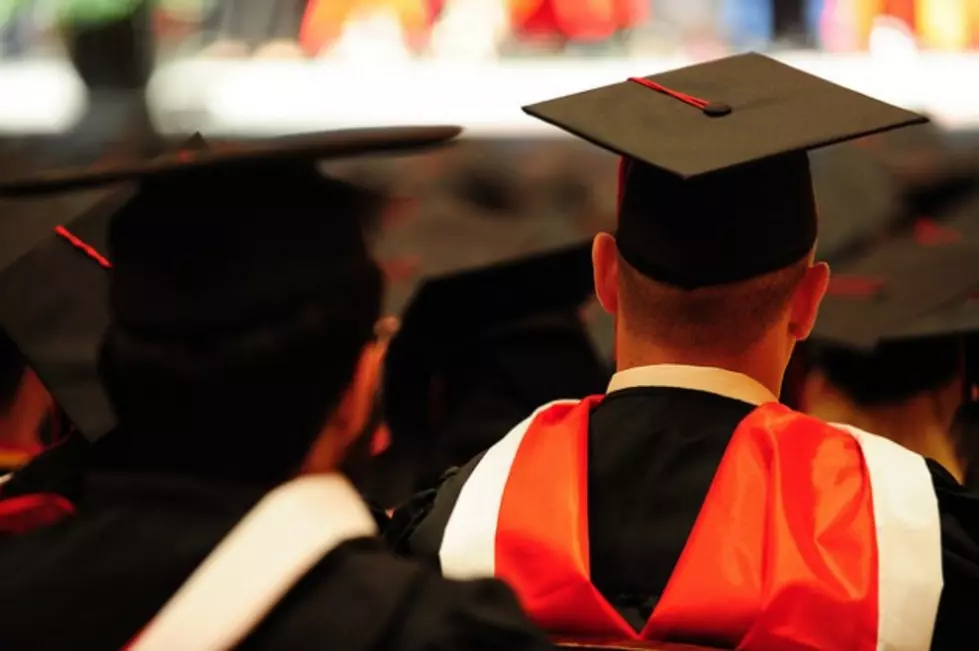
State Higher Education Spending Sees Big Decline
State funding for higher education has declined because of a slow recovery from the recession and the end of federal stimulus money, according to a study released Monday.
Overall, spending declined by some $6 billion, or nearly 8 percent, over the past year, according to the annual Grapevine study by the Center for the Study of Education Policy at Illinois State University. The reduction was slightly lower, at 4 percent, when money lost from the end of the American Reinvestment and Recovery Act was not taken into account.
The funding reductions, seen across nearly every state, have resulted in larger class sizes and fewer course offerings at many universities and come as enrollment continues to rise.
A report released by the National Science Board last week found similar reductions in state higher education spending, with nearly three-quarters of the nation's 101 top public research universities experiencing cuts in state funding between 2002 and 2010.
"It's quite severe," said Jose-Marie Griffiths, chairwoman of the National Science Board committee that produced the report and vice president for academic affairs at Bryant University in Smithfield, Rhode Island. "The question is, are they ever going to recover to the level they were before? I think all of us are somewhat concerned because the future is a little bit uncertain."
Only nine states reported increases in total state higher education spending, including the federal stimulus money. In the 41 states where there were funding reductions, declines varied drastically, from about 1 percent in North Carolina to 41 percent in New Hampshire. The hardest-hit states include Arizona, Wisconsin and Louisiana, where spending reductions were nearly 20 percent or higher as federal stimulus money dried up.
James Palmer, editor of the Grapevine survey, said state capacity to finance higher education had also been reduced by diminished tax revenues.
In a statement, the State Higher Education Executive Officers Association said states with the largest declines will likely see higher tuition rates and more pressure to recruit out-of-state students. That raises concerns about access to higher education, particularly for those students who need financial aid, another area where state support has declined.
Educating more students from out of state and less access will have "implications for the availability of an adequately trained workforce in those states," the organization said.
The group specifically highlighted California, where a $1.5 billion spending reduction, including stimulus funds, over the past two years represents 26 percent of the national decline.
Florida is another state that has seen sustained spending cuts. Over the past five years, state support for higher education has declined 17.5 percent, according to the study. As the state proportion of funding has declined, universities have relied more on tuition, now nearly 50 percent of their operating budget.
Overall state funding appropriations in Florida are about the same as they were 10 years ago, after having risen leading up to 2007-2008. Meanwhile, enrollment has increased by more than 24 percent.
To compensate for the loss, Florida universities have merged departments, instituted hiring freezes and used more adjunct professors, among other actions.
"Each university has been diligent in developing cost-saving strategies to help offset -- but not fully replace -- the budget shortfalls," according to a brief from the Board of Governors, which oversees Florida's State University System.
The National Science Board noted the funding decline could have implications for how well the United States is able to educate its workforce and be competitive in a globalized, knowledge-based economy.
Already, the United States has been trailing Asia in science and engineering degrees. Fifty-six percent of all engineering degrees were awarded in Asia in 2008, compared with 4 percent in the U.S.
The United States produced 248,000 graduates in the fields of natural science and engineering, while China produced 1 million, a dramatic increase from 2000, when they awarded 280,000. South Korea, Taiwan and Japan produced 330,000 natural science and engineering graduates in 2008 -- again, a larger number than the U.S., even though their population is smaller.
"Right now our aspirations for higher education I think far exceed the vitality of our economy," Palmer said, referring to the push to increase access to college and degree completion. "In other words, we can't depend on that state funding as the way we're going to meet those goals."
(Copyright 2012 by The Associated Press. All Rights Reserved.)
More From New Jersey 101.5 FM

![Grilling Gone Wrong – Top 5 BBQ Fails [NSFW- Language]](http://townsquare.media/site/385/files/2012/05/BBQ-Fail1.png?w=980&q=75)

![9/11/2001: On The Air [AUDIO]](http://townsquare.media/site/385/files/2012/02/1161079.jpg?w=980&q=75)





